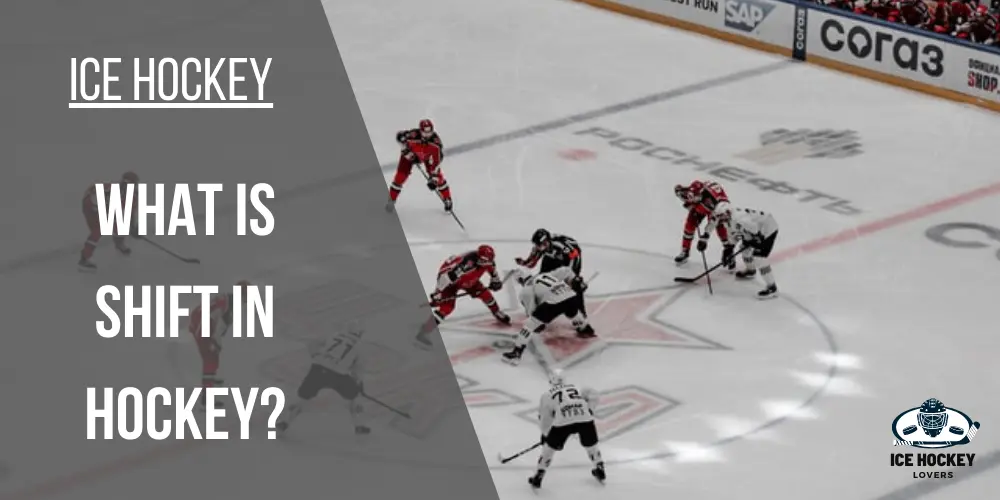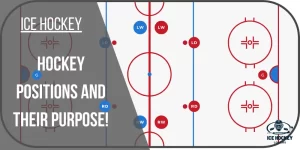What is a Shift in Hockey? Why are Hockey Shifts Short?

Have you ever wondered what attracts you to ice hockey? One of those attractions is its fast momentum. Ice hockey is one of the fastest games on the surface of the earth and a little aggressive too. But the players shape a game, so keeping hockey fast requires a lot of effort on the players’ part. The players must give their all on the ice for the game to maintain its momentum.
So, how long do shifts take for players in hockey? The average hockey player’s shift lasts about 47 seconds on the ice. There are differences between forwards and defensemen. Defensemen’s shifts are slightly longer, averaging 48.6 seconds, than forward’s shifts, averaging 46 seconds. However, a player’s change on ice can be extended more because of a game strategy.
For hockey, the rule of thumb says that shifts should be 45 seconds long so that players can provide quality play. Due to this average shift length, players might have twenty or sometimes more shifts in a single game. Throughout a game, there are shift changes known as line changes.
Table of Contents
How well do players shift according to the 45 Second rule of thumb?
The NHL consists of 32 teams. Each team brings 18 players to play the game, including 12 forwards and six defensemen. That means 32 teams with twelve forwards make 384 forwards playing, and 6 defensemen from 32 teams add up to 192 defensemen who play in a particular week.
Looking up the data for the 2018-2019 season, we find out that the average shift length of NHL players is 44 seconds.
One year later, in 2019-20, Flyers players’ shifts are much shorter – at 41 seconds each.
What is the shift length for forwards?
Forwards have their shift length lower than this average. The shift length for forwards is 46.06 seconds. Want to know why?
The forwards play in four prominent lines: the 1st line, 2nd line, 3rd line, and 4th line. The coaches arrange the players in the lines according to their performance. The first line will have the best performers, the second line with players whose performances rank lower than the first, and so on.
If we classify these 384 forwards into four groups and include 93 players in each group, and check their average shift lengths, the results are as follows:
| All Forwards | 46.06 sec |
| Top 25% | 51.19 sec |
| Next 25% | 46.96 sec |
| Next 25% | 44.52 sec |
| Lowest 25% | 41.59 sec |
There is an essential finding according to the table. You see, there is a difference of about 10 seconds between the top and the lowest categories of players. Why so?
Two crucial factors are the reason for this;
- The first cause is a natural capability. The top players are naturally more capable and have practiced and played more games, so they tend to play for a more significant period with increased stamina.
- The second apparent cause is the power play. The top players on the power plays have increased their average shift length since it is two minutes longer.
Top 5 Forwards Average Shift Lengths
| Alex Ovechkin | 1:00 |
| Patrick Kane | 0:57 |
| Evgeny Kuznetsov | 0:57 |
| Nikita Kucherov | 0:56 |
| Max Pacioretty | 0:55 |
These top five players have been on the power plays, increasing their average shift lengths. So, even though the forwards have an average shift length of 46 seconds, there are players with more extraordinary shift lengths.
How Long are Shifts for Defensemen?
To check the average shift lengths for the defensemen, we divide them into three categories, each bearing 62 players because defensemen play in three pairs. The data shows the following results:
| All Defensemen | 48.60 |
| Top 1/3 | 52.60 |
| Middle 1/3 | 48.21 |
| Last 1/3 | 45.00 |
The defensemen have to skate less than the forwards, so their shifts are understandably longer than the top forwards.
The difference between the top and bottom groups of defensemen shifts is about 7.6 seconds. The reasons for this difference are the same as the forwards; more stamina, discipline, and control and playing the power plays.
Top 5 Defensemen’s Average Shift Lengths
| Dustin Byfuglien | 1:02 |
| Ryan Suter | 0:59 |
| John Carlson | 0:59 |
| Jacob Trouba | 0:56 |
| Erik Karlsson | 0:56 |
How do Special Teams Affect Shift Length Time?
When there is a power play, the players have to spend more time on the ice than in the usual game, which increases the shift length. A player may have to play for about 70-80 seconds on the ice during this time.
The player playing the penalty will play a shorter period than this and try not to exceed the tie for more than 30 seconds. The older and experienced players may play for longer than the average 47 seconds, but the average for the newbies is 47 seconds.
Factors Impacting the Shift
A player will stay on the ice until it comes down to the shift, and it depends upon the number of factors that are listed below:
- Position of a player.
- What is the current game?
- Coach strategized play
- When linemates get off the ice
Though the average shift is about 47 seconds, only some players would get off the ice after 25 seconds, and some can come sooner. That’s all because of the many reasons mentioned above.
Frequently Asked Questions
What is the NHL’s most extended shift in history?
Jack Hughes of the New Jersey Devils set the longest shift record in NHL history. Hughes skated the final 6:02 in the third period as the Devils tried to fight back against the New York Islanders on December 9th, 2022.
How many players are there on a hockey shift?
Ice hockey teams have relatively more rosters than the players on the ice. A typical NHL team has 23 players, with 20 active game-day players and six on the ice at any time.
How do players predict when to shift?
Hockey players can sense when to shift based on multiple factors. Shift length, changing as a group with linemates, strategic strive towards opponents, and change only when it will not cause an opponent’s scoring opportunity.
Conclusion
And lastly, you might be amazed to know the average shift length if you are new to ice hockey. 47 seconds seem less in theory but aren’t for those on the ice. Only those playing know the focus and the extreme effort they are putting in, and 47 seconds mean a lot to them. So, the players need some time to breathe and return refreshed to the game.
Related Posts:

Who is Austin Taylor?
Meet Austin Taylor, your go-to source for everything ice hockey! With a passion for the sport that’s as deep as the ice itself, Austin Taylor brings you concise, expert insights and nitty-gritty details on all things hockey. From gear reviews to strategy breakdowns, Austin Taylor is your trusted guide to navigating the exhilarating world of ice hockey. Get ready to lace up your skates and dive into the game with Austin Taylor as your ultimate companion.





